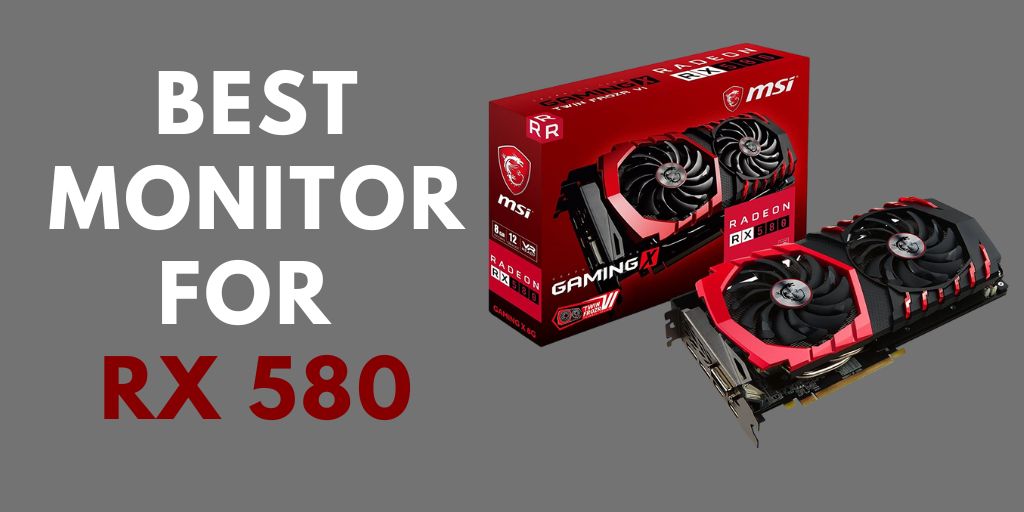The AMD Radeon RX 580 is a graphics card introduced in 2017 and offered impressive performance at a much lower price. The Radeon RX 580 is a high-quality graphics card that can handle 1080p gaming at a reasonable price.
It is meant to be a standard or entry-level option. You have arrived at the correct spot if you already possess an RX 580 and are seeking the best monitor for RX 580. However, a few things to consider before making a purchase exist.
If you want a playable frame rate, we advise you to remain with 1080p. If you’re a competitive player, you’ll like 1080p’s superior performance because getting a playable frame rate doesn’t take as much processing power.
Look at the most suitable displays for the AMD Radeon RX 580 GPU.
List Of 5 Best Monitors For Radeon RX 580
PRODUCT | SCREEN SIZE | REFRESH RATE | RATING | PRICE |
Sceptre IPS Monitor | 24 Inches | 165 Hz | ||
BenQ GW2480 | 24 Inches | 60 Hz | ||
Sceptre Curved Monitor | 30 Inches | 200 Hz | ||
Acer CB272 bmiprx | 27 Inches | 75 Hz | ||
LG 27GL83A-B | 27 Inches | 144 Hz |
1. Sceptre IPS Gaming Monitor
For its price, the Sceptre IPS Gaming Monitor looks like it may be the best monitor for RX 580. As it includes all the features, you’ll need to maximize the RX 580’s performance, and this display is an excellent match for the card.
The 1920 x 1080p resolution and 165 Hz refresh rate are perfect for the RX 580 graphics card and will offer you plenty of room for visual effects. As opposed to the current norm of 144Hz, which is provided by most gaming-designed displays, this refresh rate is greater.
Although the 24-inch display on this Sceptre monitor may be too small for some people’s tastes, upgrading to the more prominent 27-inch model is always possible. Although the 24-inch dimension is not required for 1080p gaming, it is suggested if you want the most transparent possible visual experience and are a serious gamer.
The monitor’s IPS display improves color accuracy and visibility from any angle, making gameplay more enjoyable. This monitor’s 1ms reaction time is excellent for fast-paced games like first-person shooters, which is also why it’s ideal for competitive players.
This monitor’s FreeSync technology is configurable in AMD Radeon Setting, allowing you to eliminate screen tearing difficulties and enjoy a more fluid gaming experience. We advise pairing it with the Scepter IPS Gaming Monitor to get the most out of your AMD RX 580 Graphics card.
2. BenQ GW2480 IPS Monitor
You may find the BenQ IPS Monitor to be the best budget monitor for RX 580 if you’re on a limited budget but still want a high-quality monitor to go with your RX 580. If you’re looking for a respectable to an excellent visual gaming experience, this monitor’s 1920 by 1080p resolution, 24″ screen size, and IPS panel should do the trick.
The BenQ IPS monitor, compared to the first display, which has a refresh rate of 165Hz, only has a refresh rate of 60Hz and does not come with FreeSync technology. This is a minor drawback, especially if you play first-person shooter games on the monitor.
However, this may be adequate for casual players. And if you’re a player who enjoys graphically intensive titles, a 60Hz display shouldn’t give you any issues.
If you are looking to enjoy a high-quality visual gaming experience on a limited budget, yet this monitor is still within your price range, we strongly recommend purchasing it.
3. Sceptre 30-inch Curved Gaming Monitor
You cannot go wrong with the Sceptre 30-inch Curved Monitor if you are looking for a monitor to enhance your productivity and provide an immersive gaming experience. It’s another expensive display, but with the RX 580, you should get refresh rates of up to 100 Hz.
Still, the RX 580 wouldn’t be able to run this panel at its highest frame rate; thus, the refresh rate would need to be capped. You may still make use of this higher refresh rate because there are so many FPS games that are not graphically demanding.
Despite having a VA panel, many users will still find satisfaction with the best monitor for RX 580. Thanks to the FreeSync functionality built into this display, you can make use of AMD’s adaptive sync technology for a more relaxed and less taxing gaming session.
The Sceptre 30-Inch Curved Gaming Monitor has an attractive design and excellent functionality for its low price. If you have an RX 580 graphics card, this is the most excellent Ultra-Wide display you can buy to complement it.
4. Acer CB272 bmiprx 27″ Monitor
The displays mentioned above are all made with gamers or competitive play. However, the Acer CB272 bmiprx is the best option if you need a monitor for both gaming and your workspace.
This monitor has a larger screen size than the previous two on this list, at 27 inches, and an IPS panel, which produces superior colors and viewing angles. The larger screen is great for gaming, but it will also be useful in the office because it will allow more simultaneous windows to be displayed.
The Acer monitor has a refresh rate of 144Hz, whereas this one only manages 75Hz. The 75 Hz refresh rate is more than enough for gaming, albeit it is noticeably less smooth than the other 60 Hz monitors and far smoother than a 144 Hz or 200 Hz monitor.
With its robust set of capabilities, which are equally at home in a gaming or workstation environment, you may still have a fantastic gaming experience. The Acer CB272 bmiprx is a low-refresh-rate monitor that may benefit significantly from AMD’s FreeSync technology, which is supported by its FreeSync compatibility.
The monitor’s stand, which is included, is very adaptable, supporting not just Tilt and Pivot but also height adjustment, making it ideal for a workplace where many people will be using the computer, and each of them may have a different preference for the optimal viewing distance. In conclusion, if you own an RX 580 graphics card and are in the market for the best gaming monitor for RX 580, we advise you to check out the Acer CB272 bmiprx.
5. LG 27GL83A-B Ultragear Gaming Monitor
The LG 27GL83A-B is an excellent monitor with a 1440p IPS screen that is 27 inches in size. Its incredible reaction speed, exceptionally low input latency, and a few terrific gaming features contribute to the overall quality of the gaming experience it provides.
It is certified by NVIDIA to support variable refresh rate technology (VRR) from modern NVIDIA graphics cards in addition to supporting AMD’s FreeSync variable refresh rate technology (VRR).
Glare shouldn’t be an issue because of its extreme peak brightness, outstanding reflection control, and broad viewing angles; thus, glare shouldn’t be an issue. It has a reasonably simple stand with restricted ergonomics and no RGB lighting as a model geared for those with more limited financial resources.
It has a low contrast ratio and can’t become bright enough to give a proper HDR experience. Even though it supports HDR, this feature doesn’t contribute much to the overall experience.
How to Choose the Best Monitor for RX 580 – Buying Guide
A wide variety of displays are available, from inexpensive TN monitors to high-end professional monitors selling for over $500. As long as your computer can support the total number of monitors you intend to use, you are free to mix and match them as needed. Here are some crucial factors to think about while searching for the best RX 580 monitors.
Resolution
Monitors with higher resolutions (such as QHD (2560 x 1440) or 4K UHD (3840 x 2160)) produce clearer text and more detailed images, but they also demand more powerful technology and cost more than FHD (1920 x 1080) models. Comparable considerations hold true for their ultrawide analogs. Screen size matters for both resolution and usability.
Displays under 25 inches in size should use 1080p resolution for optimal viewing. Viewing content at a higher resolution on a smaller screen without appropriate scaling can make things like text and icons less legible. When it comes to 27-inch screens, 1440p is often regarded optimal; however, 4K resolution is excellent if your PC can handle it.
Panel Type
A monitor’s panel might be one of three varieties: Vertical Alignment (VA), In-Plane Switching (IPS), and Twisted Nematic (TN) (VA). The color accuracy and viewing angles of IPS displays are unparalleled. They’re the best all-around and best for increasing productivity.
They work well for casual gaming as well, especially if your preferred genre is narrative-focused or slower-paced titles. IPS displays excel as both the primary and secondary monitors in a multi-monitor configuration. They are, however, more costly than both TN and VA displays.
Most TN displays also have a high refresh rate, which is very helpful for gaming. Compared to IPS screens, they are more affordable. However, their viewing angles and color accuracy are subpar. TN monitors are best utilized as the primary gaming screen, while they may serve as auxiliary screens for web surfing and other everyday tasks.
Refresh Rate
A 60 hertz (Hz) refresh rate is more than enough for most non-gaming uses. The same holds for occasional or typical game-playing. Invest in a display with a high refresh rate if you play fast-paced games frequently and value a fluid experience.
However, if the display resolution is higher than 1080p, you’ll need a more powerful computer to handle the higher refresh rate. It would be best if you had the appropriate hardware to use several high-refresh rate monitors in your gaming setup.
Connectivity
There are typically two video inputs on a standard monitor. A monitor compatible with your PC and graphics card right out of the box is ideal. If there are compatibility concerns, you can use adapters, but this will increase the overall cost, and there are many cheap adapters on the market that cause more troubles than they solve.
Choose a monitor with DisplayPort Out if you want to create a daisy-chained multi-monitor arrangement in which a single DisplayPort is used to feed additional displays.
G-Sync/FreeSync
Both Nvidia G-Sync and AMD FreeSync are forms of adaptive sync technology. They permit variable refresh rates (VRR), which is helpful in gaming, by dynamically adjusting the monitor’s refresh rate to the frame rate.
G-Sync displays provide a more refined and consistent gaming experience. However, they are pricier and will only function when linked to a DisplayPort-enabled Nvidia graphics card. The opposite is true of FreeSync displays, with numerous alternatives available for less than $300. They often have additional input possibilities, with specific FreeSync displays allowing for changing refresh rates when connected through HDMI.
FreeSync monitors are more flexible than their G-Sync rivals, although they are not as high-end. They are compatible with AMD graphics cards and provide variable refresh rates when linked to select Nvidia cards (although not all FreeSync monitors support this feature).
Also Recommended:
Conclusion
We hope you are now prepared to get the most out of your graphics card by purchasing the best monitor for RX 580. You are free to choose any of the possibilities mentioned earlier, provided that your needs and budget are taken into consideration. Please get in contact with us so that we can be of more assistance if you require it.






